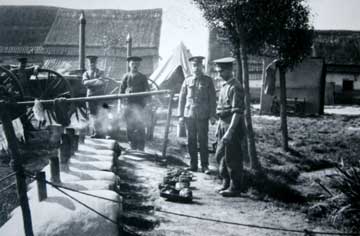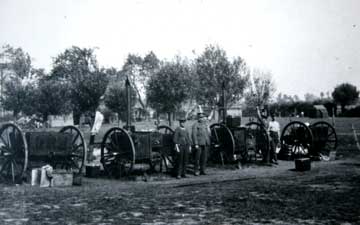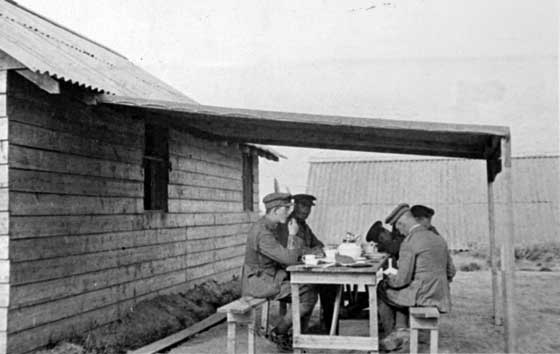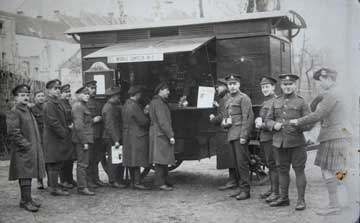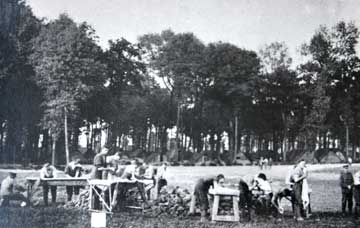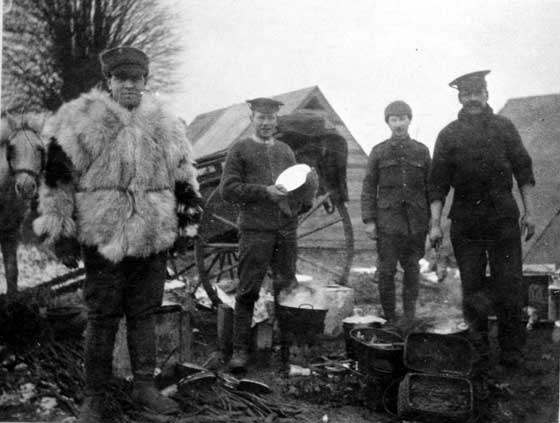 |
King's Own Royal Regiment Museum Lancaster |
|
|
HOME Museum & Collections Sales Donations Events Contact Us REGIMENTAL HISTORY 17th Century 18th Century 19th Century 20th Century First World War Second World War Actions & Movements Battle Honours FAMILY HISTORY Resources Further Reading PHOTO GALLERY ENQUIRIES FURTHER READING LINKS
© Images are copyright, Trustees of the King's Own Royal Regiment Museum. |
Museum Display Information The Great War 1914-1918 Life in the trenches Catering By a triumph of organisation, supplies of food and clothing were both good. The daily supplies for the battalion arrived on two wagons, the drivers and loaders were permanently attached to the Army Service Corps. The location of the ration dump was kept secret and constantly changed to prevent destruction by German shelling. Coal was freely issued for use in billets, field kitchens and cookers. In the trenches coke and charcoal were usual, burnt in braziers and smokeless. Cooking at the front line was very difficult. Within a short time bacon was cooked prior to issue to ensure that it was consumed properly cooked. [Cookhouse staff of 1/5th Battalion with meat ready to be roasted in ‘dutch ovens’.
Fresh vegetables were useless in the trenches. Lime juice was an essential part of the daily diet. In billets vegetables were always issued. At first it was possibly to buy them from the local inhabitants, but after the country had been swept bare they had to be imported. Flour was also issued so that the cooks could make ‘plum duff’ (plum pudding). [Cartoon by Bairnsfather, produced as postcard, about the monotony of
food. KO2090/21 KO Neg -]
Food got very monotonous, but what ever was served relieved the boredom.
The ‘Expeditionary Force Canteen’ was established early in 1915. They were able to provide many ‘luxuries’ for the soldier just returned from the front.
All water had to be carried to the front line at night. Ablutions were therefore limited. As soon as men came ‘out of the line’ they washed their shirts, sometimes burnt them if infested with lice. Some units had the use of hot baths, and whilst bathing khaki jackets, trousers and great-coats were ironed in order to get rid of insect life. The relief was indescribable.
Fighting Fleas in Flanders - Xmas Card KO1442/21 As well as the warm great-coats, goatskins were worn. They caused much amusement in producing a most un-soldierly appearance.
© Images are copyright, Trustees of the King's Own Royal Regiment Museum. Only a proportion of our collections are on display at anyone time. Certain items are on loan for display in other institutions. An appointment is required to consult any of our collections which are held in store. |

